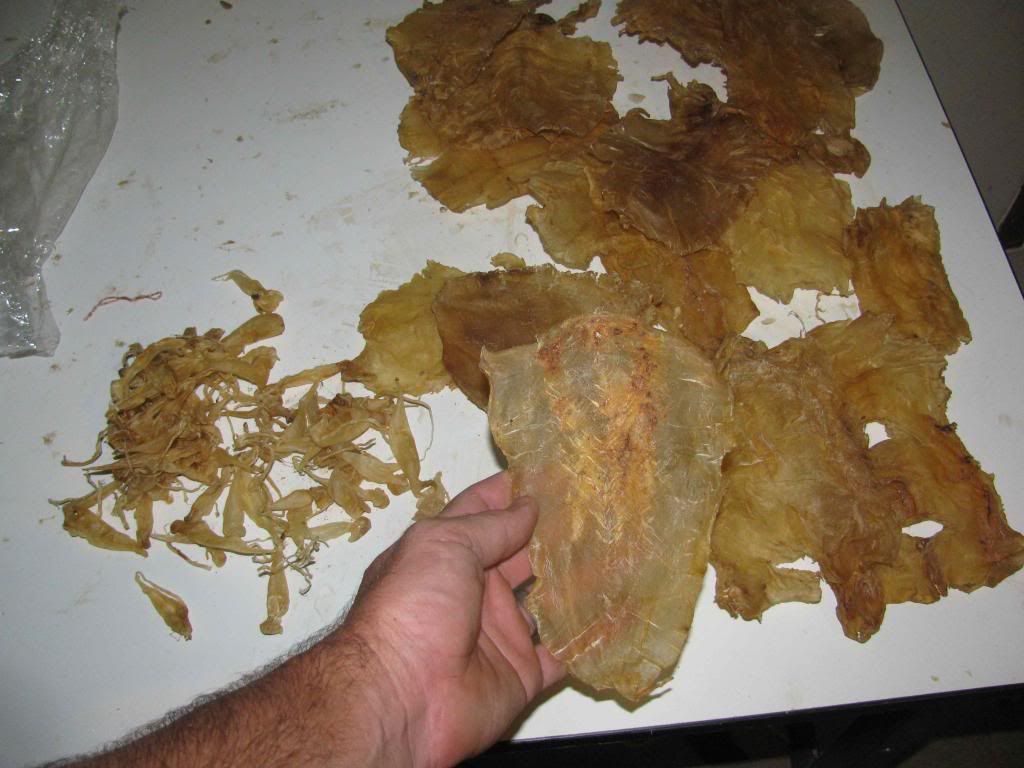sort of hard to say. Kind of feels like rubber cement as it is just setting up but now after it is dried it is less flexible than rubber cement. It took quite a bit of force to get break the seal on my fingers while it was still wet. I would imagine you would not want to let your fingers completely dry together. I think there was figures in one of Traditional Bowyers Bibles on the natural glues chapter. As I remember it was pretty comparable to modern glues in its sheering strength.

This is what my "harvest" looks like after 2 days. I slow cooked it 24 hours and kept adding water on a hot plate and then poured the glue and bladders through a mesh screen and let it gel up in the frig. Then today I broke it up into smaller pieces and let it dry so I can store it and use it as needed. Not a lot of glue it produced but I only plan to mix 10% fish bladder glue and 90% sinew glue so it should work for quite a few bows.
The bladders cost me about $30 at a market along the Burmese boarder (4 1/2 hrs from my place in Chiang Mai, Thailand so I don't get down there often). They have all different sizes there. this glue was from the smaller ones that were cheaper. It was a few hundred grams worth that made this batch. Some insects were getting in the plastic bag that they were in so I decided I better make them into glue before the finished them off.

The Thai people like to fry them and eat them as a delicacy. The Chinese also make medicine from them and the person selling them told me there are some thick varieties that fetch around $2000 US a kg. I won't be making bows from those. I bought the small ones and some larger thin ones to try out. The larger thin ones were much more expensive ($150/kg) I think this is a half kg in the picture if I remember right. I think these small ones yielded a good glue so I'll stick with these. The fish bladder glue gives you more working time while sinewing.